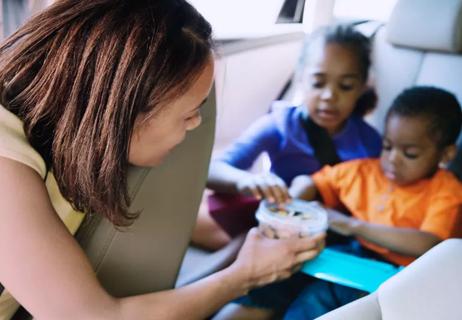Snacking can bring benefits with healthy food choices and planning

Snacking isn’t bad if it’s done right.
Advertisement
Cleveland Clinic is a non-profit academic medical center. Advertising on our site helps support our mission. We do not endorse non-Cleveland Clinic products or services. Policy
Surprised? Don’t be. Munching here and there during the day brings a full plate of benefits. It can curb food cravings, boost energy levels, rev up your metabolism, and spark your mind and muscles.
Planned snacking — with a definite emphasis on “planned” — can even help you maintain a healthy weight or lose unwanted pounds, says registered dietitian Kate Patton, MEd, RD, LD.
“Healthy snacking is a way to feed your body the nutrition it needs every few hours,” explains Patton. “It can leave you feeling more satisfied while maintaining your energy and blood sugar in a steady and balanced way.”
The “snacking” we’re talking about is different from “grazing,” or the unintentional and mindless consumption of whatever food is within reach. It’s not gobbling something down because you’re bored or stressed.
Instead, it’s a deliberate decision to fortify yourself between meals at a time when you feel your body beginning to lag.
And let’s be clear here: Most of us snack. More than 70% of Americans grab something extra to eat at least once a day, according to the 2023 Food and Health Survey from the International Food Information Council.
“Planning your snacks ahead of time sets you up for success,” says Patton. “Work it into your daily eating plan and how it fits into your overall calorie intake. Then, choose snacks that aren’t high in calories, bad fats, salt or sugar.”
Advertisement
So, what’s a healthy snack that’ll fill and fuel you up without piling on too many calories? Patton has some ideas. Here are 39 potential snacks divided into five categories to get you through the day.
NOTE: An * marks the snacks that have 10 grams or more of protein per serving. An ~ marks the snacks that are “grab and go” and don’t require refrigeration.
Advertisement
Consider the above list as nothing more than a starting point for healthy snacking. There’s a seemingly infinite number of food combinations to fit your specific tastes.
Spend some time reading food labels as you come up with your own snack creations. Try to use fresh ingredients whenever possible and stay away from processed foods high in empty calories, saturated fat, carbs and added sugars. Limit sodium, too.
“Look to pack in the whole grains, fruits, veggies and proteins,” advises Patton. “Odds are, you’ll find endless low-cal options in your cupboard and fridge if you search them out.”
Advertisement
Learn more about our editorial process.
Advertisement

This color additive, found in many pre-packaged foods, may affect people with ADHD or allergies

This decadent treat may help improve your heart health and boost your mood

With a little planning, you can fill your belly and boost your energy

Plan ahead, bring a cooler when possible and don’t forget the water!

These foods sabotage weight loss and rob you of rest

A closer look at what's inside your favorite candy

These foods will nourish your body without ruining your diet

Get the scoop on alternatives to regular and premium ice cream

Start having sex about 72 hours before ovulation, then at least every other day during your fertile window

Attachment theory suggests that your earliest relationships shape connections throughout your life

It isn’t a recognized mental health disorder, but research shows that problematic social media use can negatively affect your mental health, self-esteem and sleep